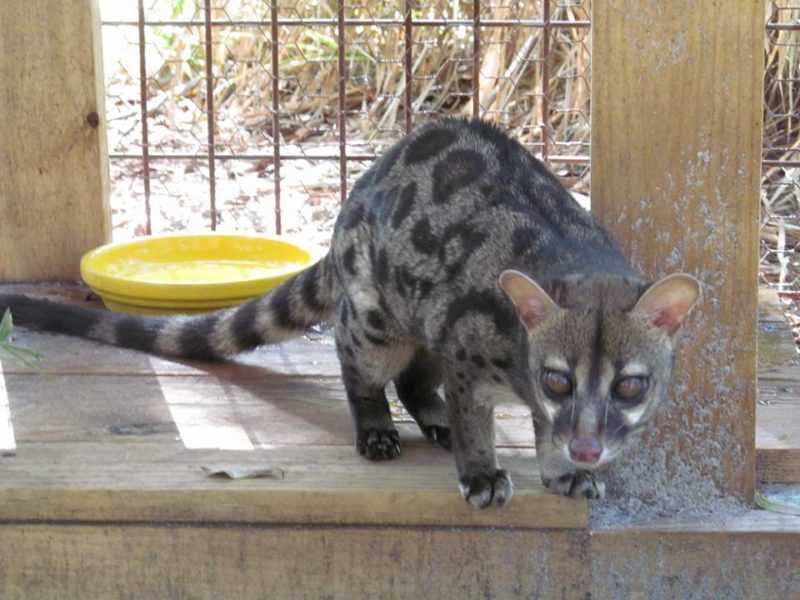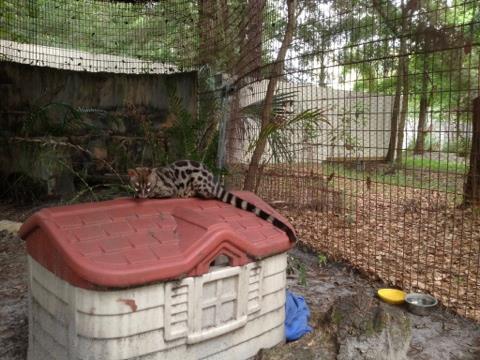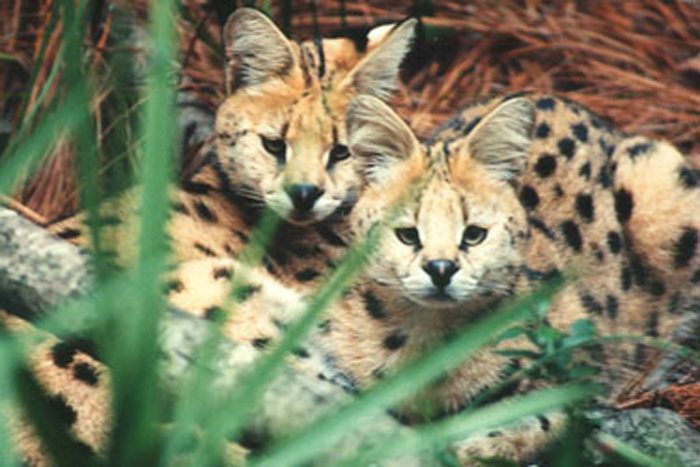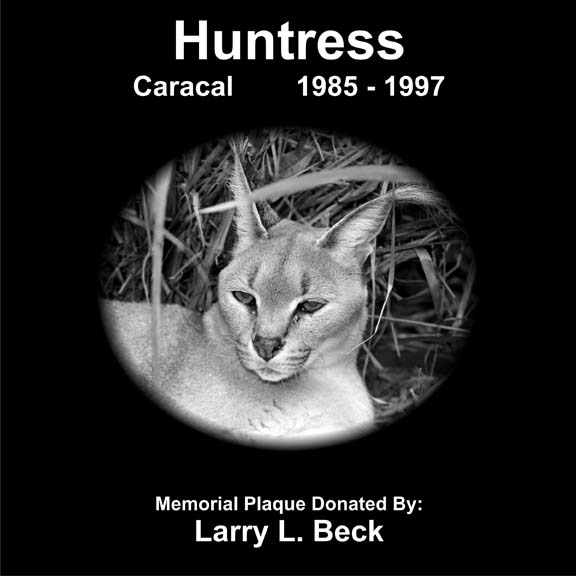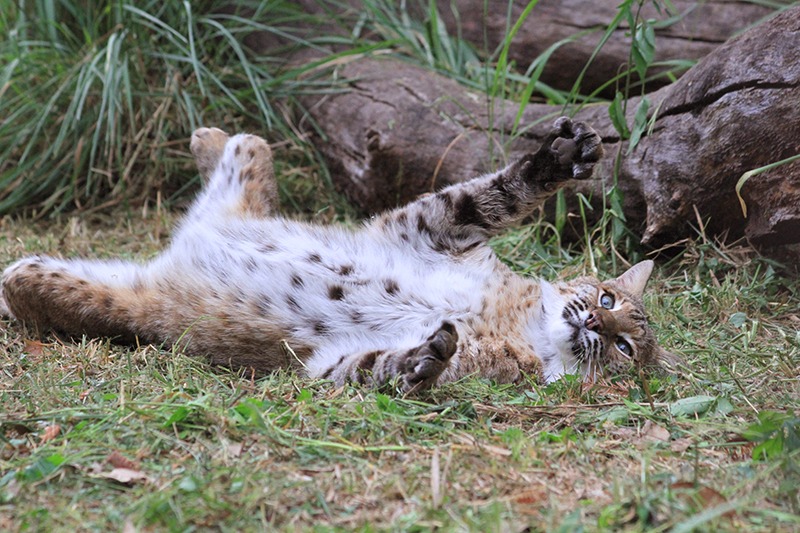Babycakes
Babycakes the African Genet
Babycakes arrived in 2000 and was thought to be about 5 years old at the time. He died 10/28/18 after having lived roughly three times longer than genet’s usually do.
Approx Date of Birth: 4/1/1995
Rescued November 1, 2000
Babycakes, the Genet Arrives
November 1, 2000 the SPCA in Largo called and said, “We have a Coati here.” I asked how they came by the creature and they said that he was found wandering around a posh neighborhood and no one had claimed him. I wondered silently to myself if these people had ever seen a Raccoon up close? There was no way that a Coatimundi was wandering around Largo. I asked them to describe the critter and it didn’t sound like a Coati nor a Raccoon. This was before the days when you could just snap a picture with your cell phone and beam it across the bay.
I was intrigued, even though I was pretty sure that what I would find would be some Bengal Cat gone feral, so I drove 40 minutes to Largo.
When I arrived the caretaker was frantically saying that she thought the poor “Coati” would die because it wouldn’t eat cat food or dog food and had been days without a meal while they had tried to find the owner. As I walked down the corridors I shuddered at what kind of experience these last chance shelters must be for anyone who isn’t a dog. The barking was deafening and it was no wonder that whatever was in the cage back there had shut down and refused to eat.
We came to a small, stainless steel cage, like the vets have for small animal recovery, and there, scared out of his mind, was a Genet. https://en.wikipedia.org/wiki/Genet_(animal) I told them what they had and explained why pet food wasn’t on his menu but that snakes and rodents would be. He was fast and wild and there was no way they were going to find a pet home for him, so I agreed to take him to the sanctuary. We guessed his age at the time to be around 5.
Photos, Videos, and Updates
For many years Babycakes has been a very loved resident at Big Cat Rescue. His every need has been met and keepers have spoiled him with treats. However, he did not have his own webpage until recently. Below are random photos and videos of Babycakes. As I run across more that have been in to past Big Cat Updates, I’ll add them here.
6/17/2017
Keeper Nanci Spires: Interesting fact about genets (aka leopard weasels), they have a popcorn smell like binturongs! I picked up on this a while ago when changing the bedding for Babycakes and I sort of thought it was a fluke. Babycakes was in the hospital at BCR (he is 22 after all) and the smell was unmistakable. He is so small that you would never get the scent like you would from Banjo – but there it is.
9/16/2017
Babycakes the African Genet is doing well. He is enjoying his fleece bed and air conditioning! When it gets really hot, Babycakes gets taken inside where it is cool. At his age the extreme heat is hard for him.
10/27/2017
Keeper Honey Wayton: Babycakes still LOVES his fan and Coolaroo. Those two gifts are his favorite gifts ever! THANK YOU!
January 2, 2018
If you scroll up this video to the 27:06 marker you can see Keepers Devin and Afton bringing Babycakes into the hospital where he can be warmer. We have been bringing him inside when the weather gets too hot or too cold.
January 3, 2017
Babycakes loves being in the warmth of indoors. It beats to cold and rain.
Random Photos of Babycakes
General photo of Babycakes, taken by keepers through the years.
Keeper Marie Schoubert 2013: Haha it’s me again Big Baby Cakes, watch out! ♥♥♥

January 29, 2018
Babycakes Gets a NEW HOME
Genet Facts
General
Member of the genus Genetta, which consists of 14 to 17 species of small African carnivorans. They are omnivorous. Their average weight is about 4.5 pounds. Average lifespan in the wild is about 8 years. They can squeeze the bodies through anything their heads fit through.
Behavior
Not cuddly pets. They are solitary except during courting & mating or when rearing young. Nocturnal. They are most active right after sunset and just before sunrise. However, juvenile Genets can be active during the day, too. They are the only viverrids stand up on their hind legs
Distribution & Habitat:
Found throughout Africa in a variety of habitats. They like ares that have dense vegetation—including woodlands, savannas, and forests.
Diet:
They eat less fruit and more meat. The catch and eat small mammals and insects. They are also opportunistic eaters and will eat whatever is available to them in the wild. Comfortable climbing trees hunting for birds and eggs. They are also comfortable on the ground hunting small mammals, as well.



